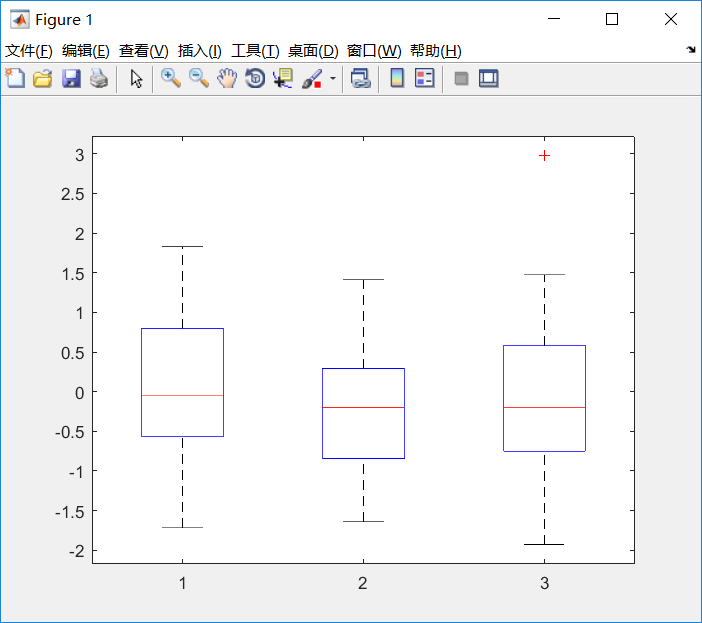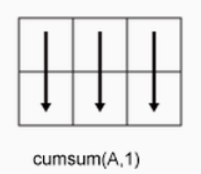概述
有些时候,为了对比不同情况下数据的均值和方差,我们可以使用表格法,但是表格法的确定在于不够直观,其实,可以利用Matlab绘图帮助我们快速而准确地表达出我们想要表达的意思。
- 若情况的个数比较少,那么我们可以使用箱线图表示数据的均值和方差;

箱线图又称为盒图,利用matlab的boxplot函数可以很方便地画出上面的效果:
boxplot(randn(30,3));- 若情况的个数过多,那么我们可以采用如下的图来对比数据在不同情况下的均值和方差。

以下源码来自于MathWorks:
function [h]=stdshade(amatrix,alpha,acolor,F,smth)
% usage: stdshading(amatrix,alpha,acolor,F,smth)
% plot mean and sem/std coming from a matrix of data, at which each row is an
% observation. sem/std is shown as shading.
% - acolor defines the used color (default is red)
% - F assignes the used x axis (default is steps of 1).
% - alpha defines transparency of the shading (default is no shading and black mean line)
% - smth defines the smoothing factor (default is no smooth)
% smusall 2010/4/23
if exist('acolor','var')==0 || isempty(acolor)
acolor='r';
end
if exist('F','var')==0 || isempty(F)
F=1:size(amatrix,2);
end
if exist('smth','var'); if isempty(smth); smth=1; end
else smth=1; %no smoothing by default
end
if ne(size(F,1),1)
F=F';
end
amean = nanmean(amatrix,1); %get man over first dimension
if smth > 1
amean = boxFilter(nanmean(amatrix,1),smth); %use boxfilter to smooth data
end
astd = nanstd(amatrix,[],1); % to get std shading
% astd = nanstd(amatrix,[],1)/sqrt(size(amatrix,1)); % to get sem shading
if exist('alpha','var')==0 || isempty(alpha)
fill([F fliplr(F)],[amean+astd fliplr(amean-astd)],acolor,'linestyle','none');
acolor='k';
else fill([F fliplr(F)],[amean+astd fliplr(amean-astd)],acolor, 'FaceAlpha', alpha,'linestyle','none');
end
if ishold==0
check=true; else check=false;
end
hold on;
h=plot(F,amean,acolor,'linewidth',1.5); %% change color or linewidth to adjust mean line
if check
hold off;
end
end
function dataOut = boxFilter(dataIn, fWidth)
% apply 1-D boxcar filter for smoothing
dataStart = cumsum(dataIn(1:fWidth-2),2);
dataStart = dataStart(1:2:end) ./ (1:2:(fWidth-2));
dataEnd = cumsum(dataIn(length(dataIn):-1:length(dataIn)-fWidth+3),2);
dataEnd = dataEnd(end:-2:1) ./ (fWidth-2:-2:1);
dataOut = conv(dataIn,ones(fWidth,1)/fWidth,'full');
dataOut = [dataStart,dataOut(fWidth:end-fWidth+1),dataEnd];
end下面介绍一个实例:
h = figure;
hold on;
x = cumsum(randn(10,95),2);
y = cumsum(randn(10,95),2)*2;
z = cumsum(rand(10,95),2)/2;
h1 = stdshade(x,0.5,'b');
h2 = stdshade(y,0.5,'r');
h3 = stdshade(z,0.5,'g');
axis square;
legend([h1,h2,h3],{'A','B','C'});
xlim([1 95]);其中,需要注意的是,cumsum函数是一个计算元素累加的函数,cumsum累加函数默认是按列进行计算的,如下所示:

如果想按行累加,就将1变为2,依次类推,cumsum的第二个参数可以将数据中任意一个维度的值相累加

需要注意的是,返回结果的维度不发生变化,累加计算过程如下:


最后
以上就是友好钢笔为你收集整理的【Matlab】均值方差对比图的全部内容,希望文章能够帮你解决【Matlab】均值方差对比图所遇到的程序开发问题。
如果觉得靠谱客网站的内容还不错,欢迎将靠谱客网站推荐给程序员好友。
本图文内容来源于网友提供,作为学习参考使用,或来自网络收集整理,版权属于原作者所有。



![[PyTorch填坑之旅]·from torch._C import * ImportError: DLL load failed解决方法[PyTorch填坑之旅]·from torch._C import * ImportError: DLL load failed解决方法](/uploads/reation/bcimg5.png)




发表评论 取消回复